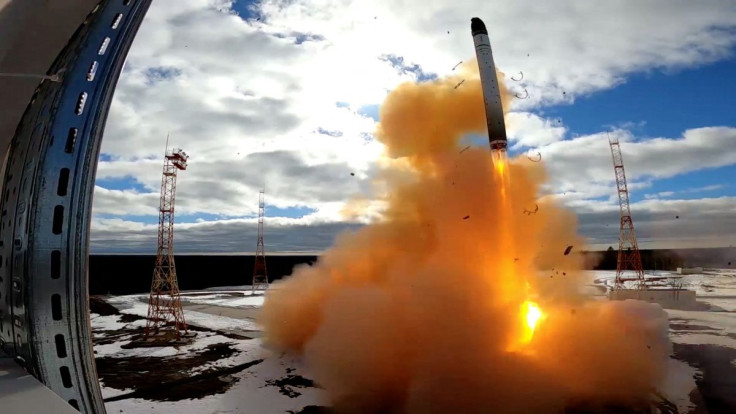What Is A Hypersonic Missile? Russia Deploys Warplanes Armed With State-Of-The-Art Weapons
Following the invasion of Ukraine, Russia has continued to tout its vast weapon inventory. On Thursday, the Russian military announced warplanes armed with state-of-the-art hypersonic missiles were deployed to the country's western-most Baltic region.
The Kinzhal missiles were deployed to the Chkalovsk air base in the Baltic Sea exclave of Kaliningrad, where the warplanes will be put on round-the-clock alert.
The move was a part of "additional measures of strategic deterrence" amid rising tensions with the West over Russia's invasion of Ukraine.
During a briefing, Russian Foreign Ministry spokesman Ivan Nechayev said, "Russia as a nuclear power will continue to act with maximum responsibility" and "the Russian military doctrine envisages a nuclear response only in retaliation to an aggression involving weapons of mass destruction or in a situation when the very existence of the state comes under threat."
Although Russia claims it will only use the warplanes if it is necessary, it begs the question: what exactly is a hypersonic missile?
A hypersonic vehicle can operate at speeds of 3,500 mph or higher, about 1 mile per second.
Intercontinental Ballistic Missiles (ICBM) are used on large rockets and launched on a predictable trajectory that flies into space and then back into the atmosphere.
The ICBMs in the world's nuclear arsenals are hypersonic and can reach speeds of 15,000 mph, about 4 miles per second.
The three types of non-ICBM hypersonic weapons are aero-ballistic, cruise missiles, and glide vehicles.
A hypersonic aero-ballistic missile is released from an aircraft and accelerates to hypersonic speed using a rocket. It then follows a ballistic, which means unpowered, trajectory.
The cruise missile is boosted by a rocket to reach hypersonic speed and uses an air-breathing engine to main the speed.
A hypersonic glide vehicle is boosted to a high altitude by a rocket and then glides to its target.
The Kinzhal deployed by Russia is an aero-ballistic missile. Russia has used the Kinzhal several times amid its invasion of Ukraine.
The Kinzhal can travel up to 1,250 miles and flies at 10 times the speed of sound, according to the Russian military.
Russia has previously hinted that some of its hypersonic weapons can carry a nuclear warhead.
Although it is unclear whether it is true, the statement has caused some concern for other countries since the speed of the weapon reduces the chance of any last-minute diplomatic resolutions.
While the latest deployment of the Kinzhal has allowed Russia to show off its military capability, Nechayev noted that "direct confrontation with the U.S. and NATO isn't in our interests."

© Copyright IBTimes 2025. All rights reserved.






















